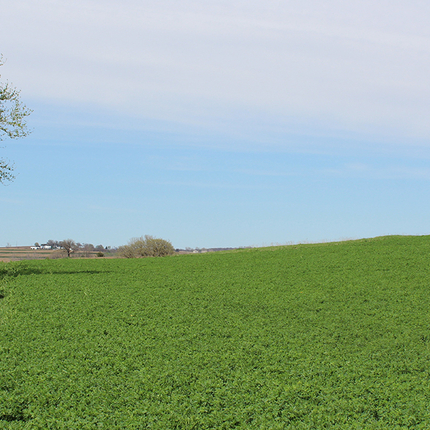By Jordan Rasmussen, former staff member
Nebraskans are left to sit upon an unbalanced three-legged tax stool.
The property tax leg is too long, representing more than 35 percent of the state’s tax revenues. The income tax leg of the stool is too short, reflecting 27 percent of state revenue. Sales tax accounts for 30 percent and the remaining 8 percent comes from other sources.
Proposals before the Legislature seek to shift this balance, but in a manner that could leave middle and low-income Nebraskans with access to fewer services while shouldering a greater percentage of the tax burden.
What does LB 461 propose?
LB 461 is the tax package brought forth by the Revenue Committee of the Nebraska Legislature.
- Shift from market-based to income-based assessments. Agricultural land valuations would fall to between 55 percent and 65 percent of market value with increases capped at 3.5 annually. This element is known as the Agricultural Valuation Fairness Act (AVFA).
- Consolidate the two lowest personal income tax brackets, currently set at 2.46 percent and 3.51 percent into one at 3.25 percent. This would change income tax rates for individuals earning less than $17,999, and couples filing jointly earning $35,999 or less.
- Phase out the personal exemption credit for high income earners ($300k/400k married filing jointly and $150k/200k all others) in 2019.
- Suspend applications to the New Markets Job Growth Investment Act and Nebraska Job Creation and Mainstreet Revitalization Act, which provide tax credits for investments in eligible community development projects and rehabilitation of historic properties.
- Increase the earned income tax credit from 10 percent to 11 percent in 2019 and 12 percent in 2020. This is a refundable tax credit for low and moderate income families.
- Beginning in 2020, using triggers based on projected growth, cut the top income and corporate tax rates from 7.81 percent to 5.99 percent.
What would be the impact of LB 461 for Nebraskans?
The combined tax cuts will reduce revenue available for education, health care, public safety and other programs, forcing communities and schools to increase property taxes to meet obligations.
- The wealthiest 1 percent (earning more than $1.6 million) would receive $5,944 per year in savings. Middle income (earning an average of $54,000) would see less than $53 per year in relief. Low income Nebraskans (less than $25,000) would receive a $12 tax cut.
- Upon full implementation, state revenues will be reduced by $458 million annually. That is more than both the corrections and state patrol budgets combined.
How is agricultural or horticultural land currently valued?
Property taxes are based on "market value," the estimated price of the property should it be sold.
- Agricultural and horticultural land is currently assessed at 75 percent of its market value.
- All property taxes are offset in part by the Property Tax Credit Relief Fund; in 2016, this fund provided a credit of $89.57 per $100,000 of valuation for all parcel types.
- State funding for education is based on a TEEOSA (Tax Equity and Educational Opportunities Support Act) formula. High property values in this formula show that the school district has ample resources and does not need state aid for education.
How does the Agricultural Valuation Fairness Act under LB 461 seek to change the valuation of agricultural or horticultural land?
AVFA modifies the assessment of property taxes for agricultural and horticultural land by:
- Reforming the method by which property is valuated by shifting from a market-based assessment to one based on income potential.
- Considering land capability, eight-year average yields, and county-based commodity prices to determine income potential.
- Requiring that valuation be set at a range between 55 percent and 65 percent of actual value and caps total statewide valuation growth at 3.5 percent over the prior year.
What will be the fiscal impact of the Agricultural Valuation Fairness Act and LB 461?
This proposal would decrease the amount of property taxes available to fund schools.
- This will trigger an increase in TEEOSA funding for these schools, increasing the demand for state aid. The state will be responsible for making up the difference.
- The state has only fully funded the TEEOSA formula in three of the last 15 years.
- The income tax cut included in LB 461 makes it unlikely that the state will have the resources to fully fund TEEOSA now or in the future.
- Upon full implementation in FY 28, LB 461 will cost the state $458 million per year.
How will rural communities and schools be impacted by this change in valuations?
The most rural counties and residents will see the least benefit.
- With fewer commercial and residential properties to share the tax shift, rural counties and schools may resort to levy increases to make up for revenue losses. In effect, this will decrease or eliminate the property tax relief afforded by the act.
- It is estimated that in FY 17 there would have been a $141 million shortfall for local governments had the change in valuations been enacted.
- Where increased levies are not an option, the revenue losses may result in cuts to schools, public safety, road and county services.
How does this change in valuation help taxpayers deal with immediate challenges?
The immediate tax relief to be afforded to ag land owners is unknown.
- Had AVFA been enacted for 2017, the Department of Revenue estimates average county valuation would decrease by 11 percent. County changes would range from a 7 percent increase (Hooker and McPherson) to a 20 percent decrease (Adams and Nuckolls).
- Using the current market value approach for 2017, valuations vary from a 19 percent increase (Hooker and McPherson) to a 9 percent decrease (Nuckolls and Sarpy).




